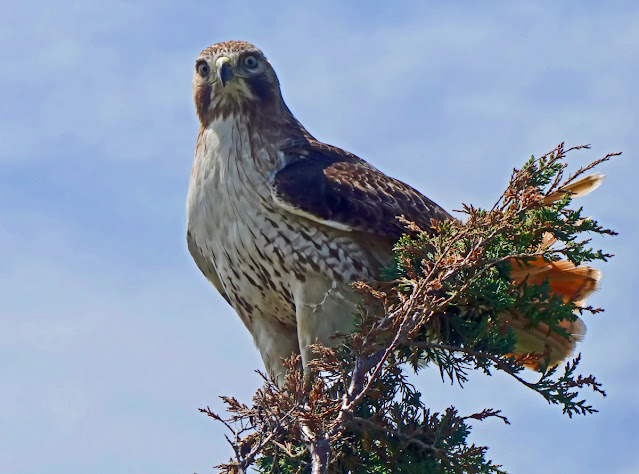Last week Claranne reported on a moose which, after swimming across the lake, climbed up onto land near Loon Point Road. With her quick reaction she was able to get a picture for all of us to see it!
 |
Our latest moose visitor after taking a dip in Lake Wicwas.
Photo by Claranne Bechtler. |
Moose are such ungainly animals - look at the shape and angle of that hind leg - but what impressive creatures. They are the largest animals in New Hampshire, easily weighing over 1000 pounds, and although the population in New England is suffering greatly due to the winter tics, they do still roam the Lakes Region.
The warming climate means winter tics are not dying off in the winter and so are having a much greater impact on the moose. Of course another huge factor in their decline is the loss of habitat. Research has shown that moose can better survive winter tics when their population density is lower, but as their land is taken over by development they are forced into fewer and fewer tracts of land. Moose need large areas of unfragmented land - they can't live in developed areas like deer - so deer have taken over from moose as the most common ungulate in the state. According to NH Fish and Game, "prior to European settlement moose were more common than deer in New Hampshire". You can learn more about moose on the NH Fish and Game website.
Over the years I've seen moose swimming in the lake, munching on aquatic vegetation in the marshes, and wandering among the young forest in the Eames Conservation Area.
 |
| A moose munches on aquatic vegetation in Harris Cove on Lake Wicwas early one morning. |
Today I don't see as many signs of them as I used to, but if you hike on the White Trail (up to Arbutus Hill Pond in the Hamlin-Eames-Smyth Conservation Area) you can still find signs of moose having scraped bark off red maple trees - look for scars running up and down the trunk, about four to six feet above ground level.
 |
| Healed-over scars from moose scraping trees near the White Trail in the Eames Conservation Area. |
The Meredith Conservation Commission is currently working on a habitat cut along the White Trail, clearing an area that will allow young trees to grow back. Moose consume leaves and aquatic vegetation during the summer but when the leaves are gone and the ponds and wetlands freeze over, moose use the tender bark of young trees as a food source to survive the winter. The clearing will also provide habitat for a wide range of other animals that need young, successional forests to live, including many bird species such as the common yellowthroat and the chestnut-sided warbler.
 |
| Chestnut-sided warbler in a young maple forest. |
While I'm on the subject of different habitats, the newly restored field at the Page Pond Conservation Area along Barnard Ridge Road appears to be the new nesting site of bobolinks.
 |
Bobolink in the field off Barnard Ridge Road.
Photo by Eileen Moore. |
The bobolinks' arrival last week was noted by Squam Lakes Science Center Executive Director Iain MacLeod; he believes they were driven out of another field when it was mowed, destroying their nest. They are displaying nesting behavior at Page Pond, so we're hoping they'll have a successful nesting here. If you walk up the trail through the field you are likely to see them. The field is a wonderfully different habitat than our many forests and is becoming home to a wide range of non-forest dwelling species.
Finally, our own nest of loons on Lake Wicwas is still being well tended to and we should be seeing new little chicks any day now - fingers are crossed!
 |
Mom or dad loon heading back up for its shift on the nest.
Photo by Dave Thorpe. |
Whether on land or water, large or small, there's always something to be seen around the lakes.
Just in, this late-breaking news: We have a chick!
 |
| Introducing Coco. |
She was first observed on June 26 by Linda Powell who has named our newest lake member Coco. Sadly, it appears Coco isn't going to have a sibling as the second egg was left on the nest, intact, for reasons unknown. Hopefully we'll have a long summer ahead of watching little Coco grow big and strong. But please be extra careful on the lake for the next few weeks as Coco cannot dive to protect herself yet. (No, we don't know that it's girl, but that's what Linda has decreed! ; )
 |
| The proud new parents take Coca on its first tour of Lake Wicwas. |








































